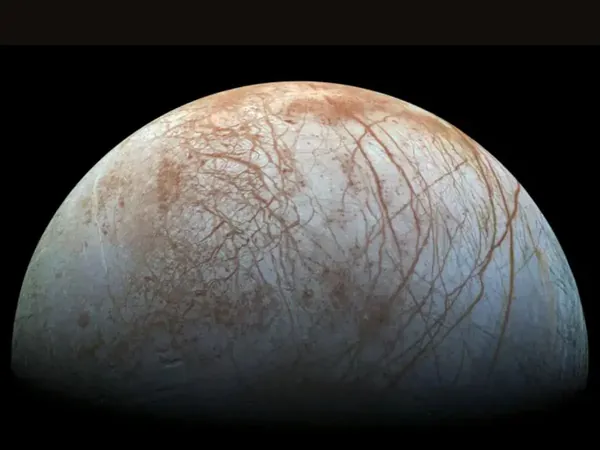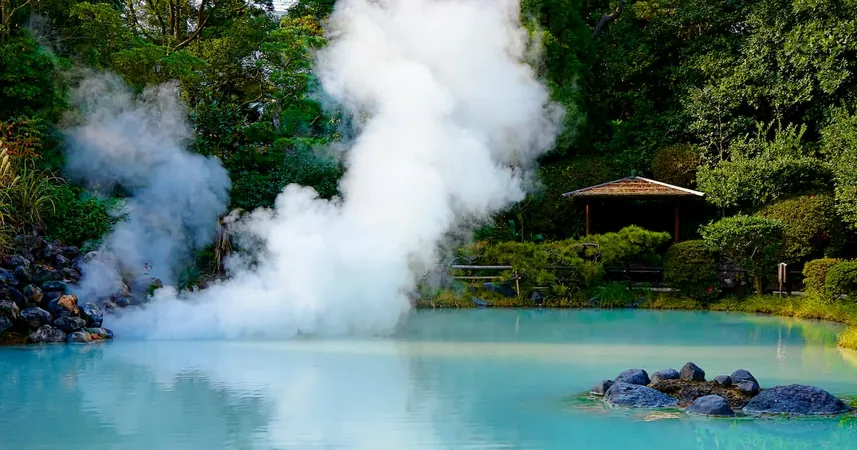
Unveiling Jupiter: 5 Mind-Blowing Facts About the Gas Giant
2025-08-31
Author: Li
Jupiter: The Majestic Giant of Our Solar System
Jupiter reigns as the colossal king of our solar system, boasting a diameter over 11 times that of Earth and a volume capable of enclosing more than 1,300 Earths! This gas giant, primarily composed of hydrogen and helium, is akin to a star that never ignited, wielding a gravitational pull that profoundly shapes our cosmic neighborhood. Jupiter plays a vital dual role: it safeguards the inner planets by shielding them from perilous asteroids while inherently redirecting some into treacherous trajectories.
The Great Red Spot: A Timeless Tempest
One of Jupiter's most captivating features is the Great Red Spot—an awe-inspiring storm massive enough to engulf Earth, having raged for a staggering 350 years. With wind speeds reaching between 430 and 680 km/h (270 to 425 mph), this tempest obliterates any hurricane we know of on our home planet! Astronomers have recently identified a variety of other colossal storms that merge and disrupt one another, revealing the chaotic weather systems that exist far beyond our atmosphere.
Hidden Rings: Jupiter's Secret Accessories
While Saturn is celebrated for its dazzling rings, Jupiter possesses its own elusive ring system. Discovered in 1979 by NASA’s Voyager 1, these faint rings, made of dust from its tiny inner moons impacted by meteoroids, might go unnoticed. Unlike Saturn’s icy bands, Jupiter's rings are dark and slender, reminding us that this gas giant is a trove of surprises.
Moons Galore: The Diverse Family of Jupiter
Jupiter's family of moons numbers at least 95, showcasing incredible diversity—from tiny irregular rocks to colossal celestial bodies. The four most prominent, known as the Galilean moons, are nothing short of extraordinary. Io is the solar system's most volcanically active entity; Europa is suspected to harbor an ocean beneath its ice, containing more water than Earth; Ganymede holds the title of the largest moon; and Callisto, with its ancient and scarred surface, is a testament to our solar system’s tumultuous history.
The Mighty Magnetosphere: Jupiter's Protective Shield
Jupiter's magnetic field is unparalleled, approximately 20,000 times more powerful than Earth’s! This immense magnetosphere stretches out into space, trapping charged particles in radiation belts that are so intense they could incapacitate spacecraft in mere hours without robust shielding. These radiation belts produce breathtaking auroras that outshine anything witnessed on Earth, painting the landscape at Jupiter's poles.
Endless Mysteries: What Lies Beneath?
Despite centuries of exploration, Jupiter remains enshrouded in mystery. With no solid surface, only swirling layers of dense gas, it possibly harbors a core of rock or metallic hydrogen under immense pressure. NASA's Juno spacecraft has unveiled that Jupiter's atmosphere is far more intricate than previously imagined, revealing ammonia storms, jet streams coursing thousands of kilometers deep, and bizarre cyclone clusters surrounding the poles.
Jupiter: The Key to Our Cosmic Understanding
Jupiter is not merely a planetary behemoth; it is a vital key to deciphering the secrets of our solar system. Its gravitational influence has sculpted the orbits of planets, asteroids, and comets for eons. Studying Jupiter enriches our understanding of gas giants and may illuminate the existence of similar planets beyond our own sun, expanding our cosmic horizons.



 Brasil (PT)
Brasil (PT)
 Canada (EN)
Canada (EN)
 Chile (ES)
Chile (ES)
 Česko (CS)
Česko (CS)
 대한민국 (KO)
대한민국 (KO)
 España (ES)
España (ES)
 France (FR)
France (FR)
 Hong Kong (EN)
Hong Kong (EN)
 Italia (IT)
Italia (IT)
 日本 (JA)
日本 (JA)
 Magyarország (HU)
Magyarország (HU)
 Norge (NO)
Norge (NO)
 Polska (PL)
Polska (PL)
 Schweiz (DE)
Schweiz (DE)
 Singapore (EN)
Singapore (EN)
 Sverige (SV)
Sverige (SV)
 Suomi (FI)
Suomi (FI)
 Türkiye (TR)
Türkiye (TR)
 الإمارات العربية المتحدة (AR)
الإمارات العربية المتحدة (AR)